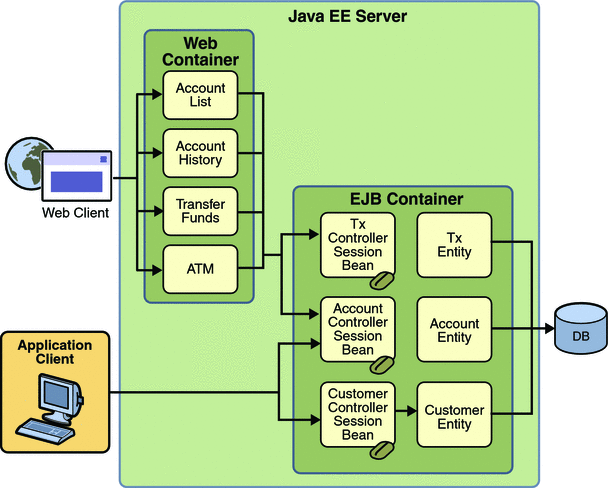Overview of the Duke’s Bank Application
Duke’s Bank has two clients: an application client used by administrators to manage customers and accounts, and a web client used by customers to access account histories and perform transactions. The web client is built using JavaServer Faces technology (see Chapter 10, JavaServer Faces Technology). The clients access the customer, account, and transaction information maintained in a database through enterprise beans. The Duke’s Bank application demonstrates the way that many of the component technologies presented in this tutorial (enterprise beans, application clients, and web components) are applied to provide a simple but functional application.
Figure 37-1 gives a high-level view of how the components of the Duke's Bank application interact.
Figure 37-1 Duke's Bank Application




